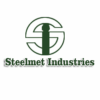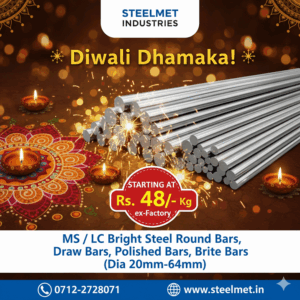Introduction
The EN2 family of steel grades, as specified in the British Standard BS970-1955, consists of free-cutting mild steels ideal for components that require excellent machinability with moderate strength. Variants like EN2A, EN2B, EN2C, and EN2D offer small but significant changes in composition to suit specific manufacturing needs. This article compares these grades in detail to help engineers, buyers, and manufacturers choose the most suitable material.
Comparison Table – Chemical Composition (% by weight)
| Grade | Carbon (C) | Manganese (Mn) | Sulphur (S) | Phosphorus (P) | Notes |
|---|---|---|---|---|---|
| EN2 | 0.07–0.15 | 0.60–0.90 | ≤ 0.05 | ≤ 0.05 | Base grade, general purpose |
| EN2A | 0.07–0.15 | 0.60–0.90 | 0.10–0.15 | ≤ 0.05 | Higher sulphur, better machinability |
| EN2B | 0.07–0.15 | 0.60–0.90 | 0.15–0.25 | ≤ 0.05 | Very high sulphur for automated machining |
| EN2C | 0.07–0.15 | 0.60–0.90 | 0.25–0.35 | ≤ 0.05 | Ultra machinable for high-volume production |
| EN2D | 0.07–0.15 | 0.60–0.90 | 0.35–0.45 | ≤ 0.05 | Maximum machinability with trade-off in weldability |
Applications
These grades are typically used in:
Turned parts
Bushes and spacers
Screws, studs, and bolts
Lightly stressed mechanical parts
Automated machining (especially EN2C & EN2D)
Key Differences & Selection Guide
EN2: The base mild steel variant, usable for general machining and simple turning operations.
EN2A: Slightly enhanced machinability without much compromise on mechanical properties.
EN2B: Balances good machinability with strength; good choice for threaded components.
EN2C: Optimized for fast production lines and CNC automation.
EN2D: Maximum sulphur for the best machinability, but not recommended for parts that require welding.
If your process relies heavily on speed and dimensional precision, Steelmet Industries can provide bright bars or special-shaped steel bars in EN2-series steels, tailored to your machine feed sizes and tolerances.
Heat Treatment & Weldability
These steels are not generally heat treated for strength. Due to high sulphur content, EN2C and EN2D are not suitable for welding and must be used in mechanically fastened assemblies.
Machinability Index (Approx.):
| Grade | Machinability (%) |
|---|---|
| EN2 | 50% |
| EN2A | 60% |
| EN2B | 70% |
| EN2C | 85% |
| EN2D | 95% |
Why Source EN2 Series Steels from Steelmet Industries?
We understand the precise demands of automated manufacturing. Whether you need custom-cut bright bars, hexagonal or round corner squares, or tailored steel with precise sulphur content, our team ensures reliable and traceable supply – right from VD-route verification to lab-tested certification.
If you’re looking to streamline your component production, talk to our technical team or reach us on WhatsApp at +91 712 2728071 to explore grades that work best with your processes.
FAQs
Q: Can EN2D be welded?
A: Due to its high sulphur content, EN2D is not suitable for welding. Mechanical fastening or threading is recommended.
Q: What’s the difference between EN2 and EN2A?
A: EN2A has higher sulphur than EN2, giving it better machinability but slightly reducing ductility.
Q: Are these steels available as bright bars?
A: Yes, Steelmet Industries supplies these grades in bright bar and custom profile forms with tight tolerances.


